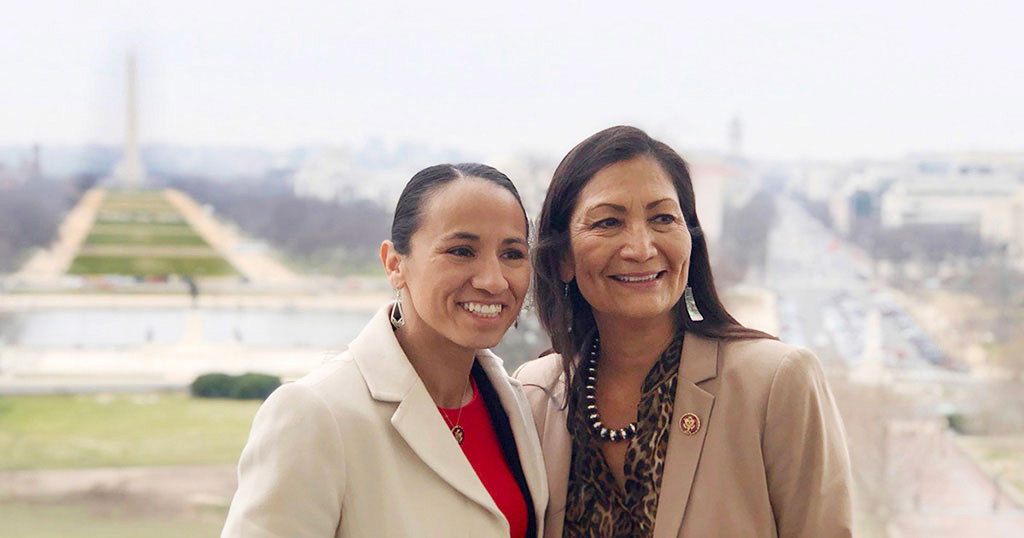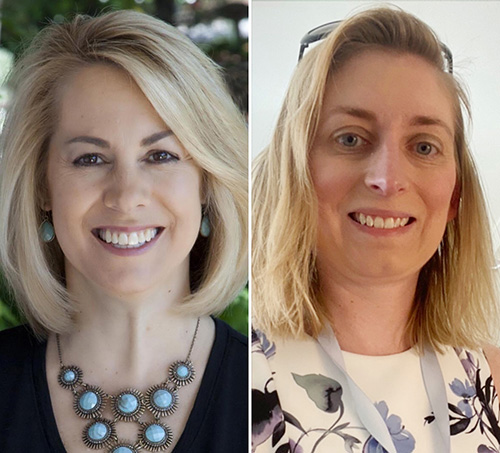Policy over personal: How Native media cover women in politics

LAWRENCE – National Native news outlets focus more on policy issues when covering women in politics than the problematic, gendered stereotypes commonly emphasized in mainstream media, according to a new journalism study.
“The influence of Indigenous standpoint: Examining Indian Country press portrayals of Native women in politics” was recently published in Newspaper Research Journal and is the latest work by two University of Kansas professors of journalism & mass communications.

Melissa Greene-Blye, who also is affiliated with KU’s Indigenous Studies Program and is an enrolled citizen of the Miami Tribe of Oklahoma, and co-author Teri Finneman analyzed a year’s worth of the three leading Native American newspapers’ coverage of U.S. Reps. Sharice Davids and Yvette Herrell and Secretary of the Interior Deb Haaland.
The authors found striking differences in how Native media outlets cover women in politics compared with common mainstream journalistic approaches. For example, there was little to no emphasis on their appearance, identity as women and personal lives. Rather, the focus was on policies, such as Missing and Murdered Indigenous Women legislation, Indian boarding schools and Native voting rights.
“It gives political leaders a space to speak at length and in detail about the work they're doing,” Greene-Blye said. “It is definitely creating a different space for these women and for Native voices in general that does not and has not existed outside of Native media.”
The data illustrated the influence of Indigenous standpoint on the journalistic norms of Native media outlets as it was clear that coverage centered around the promotion of policies considered important to Native communities — to the extent that conservative voices that did not align with these stances were often left out of the coverage, according to the researchers. As a result, Davids, a Kansas Democrat, received five times the press of Herrell, a New Mexico Republican.
“You definitely see more coverage of Sharice Davids and Deb Haaland because their viewpoints are more in line with the broader community across Indian Country,” Greene-Blye said. “However, there are differences of opinion, perspective and political leanings within Indian Country. So when you see coverage of Herrell or other conservatives, it is usually because there is a specific aspect of what they're supporting that is of benefit to that nation in that moment, or they are being criticized for opposing the consensus.”
As the title stated, the research paper is informed by Indigenous standpoint theory, which Greene-Blye defined as “the idea that you as a scholar cannot separate your lived experience from your scholarly perspective.”
“So along with a couple of our colleagues in the broader scholarship field of media history, we are starting to examine how it informs the work that Native media do,” she said.
The authors use the term “strong objectivity,” as opposed to advocacy, to describe the role that Native media — and thus those outlets’ audiences — see for themselves. This differs from the use of “objectivity” by mainstream media since it has a different goal.
“So strong objectivity is compensating for these marginalized voices that have been left out all these years and giving their voice more prominence,” Finneman said.
By avoiding mainstream journalistic practice that believes “both sides” need to be in a story, Finneman said Native media are “getting away from much of the political theater that really has no substance” that is common in the national political media. Finneman is also the author of “Press Portrayals of Women Politicians, 1870s-2000s.”
“Certainly, democracy and politics as a whole would be much better served if we would focus more on actual policy and serious issues, rather than focusing on political theater and sound bites,” Finneman said.
Images: Melissa Greene-Blye (left, above) and Teri Finneman examined coverage of Native politicians by Native American media, including U.S. Rep Sharice Davids (at left, top) and former U.S. Rep. Deb Haaland, who posted the photo of them in Washington to her Twitter account on May 22, 2019.